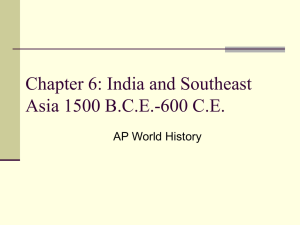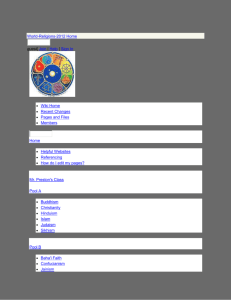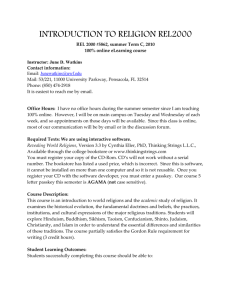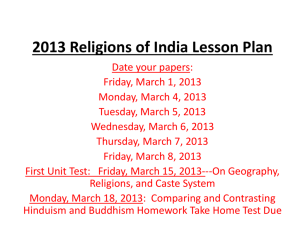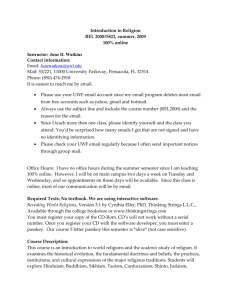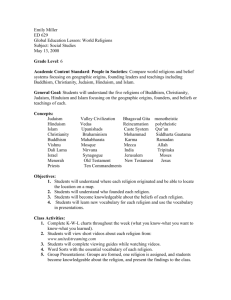REL 101 Introduction to Religion II
advertisement
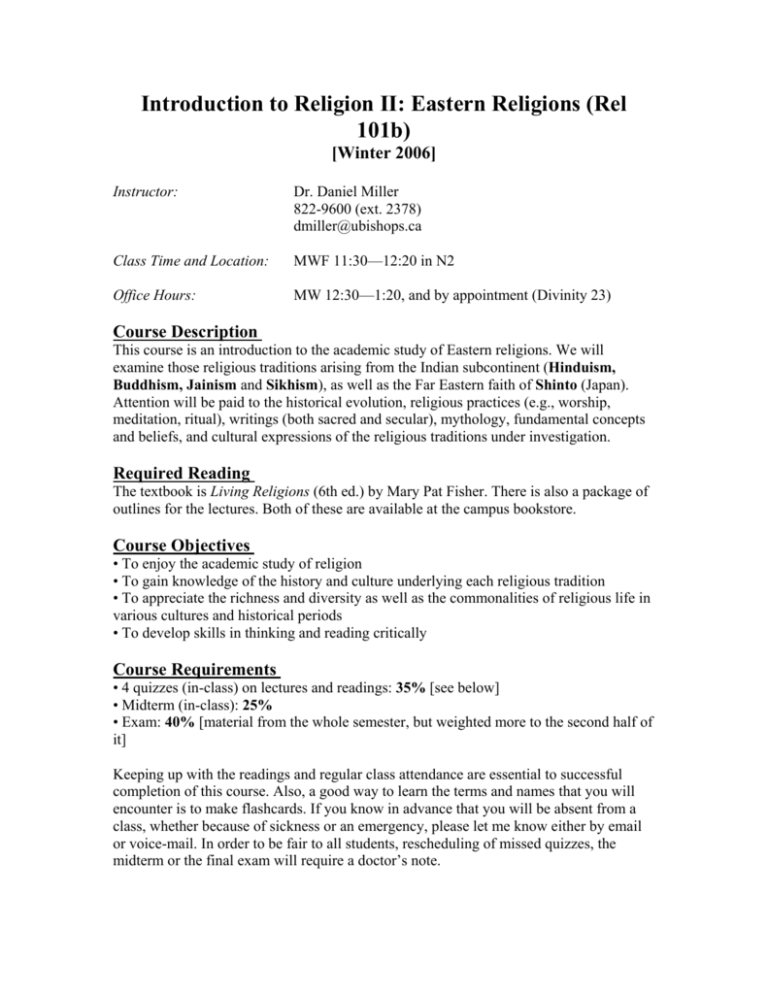
Introduction to Religion II: Eastern Religions (Rel 101b) [Winter 2006] Instructor: Dr. Daniel Miller 822-9600 (ext. 2378) dmiller@ubishops.ca Class Time and Location: MWF 11:30—12:20 in N2 Office Hours: MW 12:30—1:20, and by appointment (Divinity 23) Course Description This course is an introduction to the academic study of Eastern religions. We will examine those religious traditions arising from the Indian subcontinent (Hinduism, Buddhism, Jainism and Sikhism), as well as the Far Eastern faith of Shinto (Japan). Attention will be paid to the historical evolution, religious practices (e.g., worship, meditation, ritual), writings (both sacred and secular), mythology, fundamental concepts and beliefs, and cultural expressions of the religious traditions under investigation. Required Reading The textbook is Living Religions (6th ed.) by Mary Pat Fisher. There is also a package of outlines for the lectures. Both of these are available at the campus bookstore. Course Objectives • To enjoy the academic study of religion • To gain knowledge of the history and culture underlying each religious tradition • To appreciate the richness and diversity as well as the commonalities of religious life in various cultures and historical periods • To develop skills in thinking and reading critically Course Requirements • 4 quizzes (in-class) on lectures and readings: 35% [see below] • Midterm (in-class): 25% • Exam: 40% [material from the whole semester, but weighted more to the second half of it] Keeping up with the readings and regular class attendance are essential to successful completion of this course. Also, a good way to learn the terms and names that you will encounter is to make flashcards. If you know in advance that you will be absent from a class, whether because of sickness or an emergency, please let me know either by email or voice-mail. In order to be fair to all students, rescheduling of missed quizzes, the midterm or the final exam will require a doctor’s note. Quizzes The quizzes will take at most 20 minutes each. The mark breakdown is as follows: #1 Hinduism: 10% #2 Buddhism: 10% #3 Jainism and Sikhism: 10% #4 Shinto: 5% Total: 35% The tentative date of each of the quizzes is indicated in the “Course Outline and Readings” section directly below. The format of the quizzes will always be multiple choices. Course Outline and Readings (subject to change) The boxed readings are to be done subsequent to the day under which they are listed. So, for example, ch. 1 of Living Religions should be read after this Friday’s class in preparation for Monday. You are, of course, welcome to read ahead-if you want to; since most of the readings are listed after a class that precedes a quiz day, it might be a good idea to get that reading done before you have to study for the quiz. Week 1: Jan. 11, 13 W Syllabus distribution, class introduction, total avoidance of any real work F Class discussion: What does the word “religion” mean to you? Living Religions, ch. 1 Week 2: Jan. 16, 18, 20 M Methodological and theoretical issues in the study of religion Living Religions, ch. 3 W Hinduism F Hinduism Week 3: Jan. 23, 25,27 Hinduism Week 4: Jan. 30; Feb. 1,3 Hinduism Week 5: Feb. 6,8, 10 M Hinduism W Hinduism Living Religions, ch. 5 F Quiz #1 (Hinduism); Buddhism Week 6: Feb. 13, 15, 17 Buddhism Week 7: Feb. 20, 22,24 M Buddhism W Midterm (Hinduism, Buddhism) F Buddhism Week 8: Reading Week Week 9: Mar. 6, 8, 10 Buddhism Week 10: Mar. 13, 15, 17 M Buddhism Living Religions, ch. 4 W Quiz #2 (Buddhism); Jainism F Jainism Week 11: Mar. 20, 22, 24 M Jainism W Jainism Living Religions, ch. 11 F Sikhism Week 12: Mar. 27, 29, 31 Sikhism Living Religions, ch. 7 Week 13: r. 3, 5, 7 M Quiz #3 (Jainism, Sikhism); Shinto W Shinto F Shinto Week 14: Apr. 10, 12 M Shinto W Quiz #4 (Shinto)

